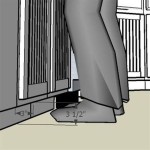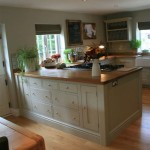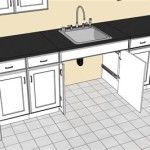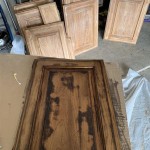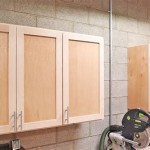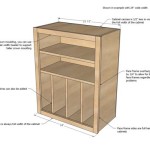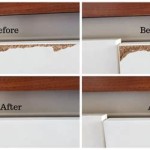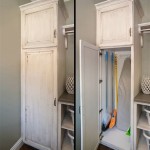Spray Paint Kitchen Cabinets Reviews: A Comprehensive Guide
Kitchen cabinets are a significant element in the overall aesthetic and functionality of a home. Over time, cabinets can become worn, outdated, or simply no longer align with evolving design preferences. Replacing cabinets can be a costly and disruptive undertaking. Spray painting offers an alternative solution, providing a cost-effective way to refresh and modernize the appearance of existing kitchen cabinets. This article explores the process of spray painting kitchen cabinets, addressing various aspects including preparation, paint selection, application techniques, and considerations based on different cabinet materials.
Before embarking on a spray painting project, thorough research and planning are essential. Understanding the intricacies of the process, proper preparation methods, and the specific requirements of the cabinet material are key to achieving a professional and durable finish. This article aims to provide a comprehensive overview, enabling homeowners to make informed decisions regarding their kitchen cabinet renovation projects.
Key Points to Consider Before Spray Painting
Successfully spray painting kitchen cabinets involves more than simply applying a coat of paint. Several factors must be taken into account to ensure a high-quality, long-lasting result. These include assessing the current condition of the cabinets, choosing the right type of paint and equipment, and understanding the specific preparation steps required for the cabinet material.
The initial step is to thoroughly evaluate the condition of the existing cabinets. Look for any signs of damage, such as scratches, dents, chips, or water damage. These imperfections must be addressed before painting to ensure a smooth and even finish. Depending on the severity of the damage, repairs may involve filling in holes with wood filler, sanding down rough edges, or even replacing damaged sections.
Selecting the appropriate type of paint is crucial for achieving a durable and aesthetically pleasing result. Different types of paint offer varying levels of durability, adhesion, and finish. For kitchen cabinets, durable options like acrylic latex or enamel paints are often preferred. Acrylic latex paints are known for their ease of application, low odor, and excellent color retention. Enamel paints, on the other hand, are valued for their hardness and resistance to chipping and scratching. Water-based paints are generally favored due to their lower VOC (volatile organic compounds) content, making them a more environmentally friendly option.
Furthermore, the type of sprayer can significantly impact the final outcome. There are various types of sprayers available, including airless sprayers, HVLP (high volume low pressure) sprayers, and aerosol cans. Airless sprayers are typically used for larger projects and provide a fast and efficient application. HVLP sprayers offer finer control over the spray pattern, resulting in a smoother finish but they may require more time for application. Aerosol cans are suitable for small touch-up jobs or for applying primer in hard-to-reach areas. Investing in a quality sprayer appropriate for the size and complexity of the project is highly recommended.
Surface preparation is paramount to successful spray painting. This involves cleaning the cabinets thoroughly to remove any dirt, grease, or grime. A degreasing cleaner specifically designed for kitchen cabinets is recommended. After cleaning, the cabinets need to be scuff-sanded to create a slightly rough surface that the primer and paint can adhere to. The level of sanding required depends on the existing finish of the cabinets. For glossy surfaces, more aggressive sanding may be necessary. After sanding, all dust must be removed using a tack cloth or a vacuum with a brush attachment.
Priming is an essential step in the spray painting process. Primer helps to create a uniform surface for the paint to adhere to, improves adhesion, and blocks stains. Choosing the right type of primer is important for achieving optimal results. For example, an oil-based primer is often recommended for cabinets made of wood, as it helps to seal the wood and prevent tannins from bleeding through the paint. A bonding primer is designed to adhere to slick surfaces, such as laminate or melamine. Priming also aids in achieving a uniform color, especially when painting light colors over a dark existing finish.
Step-by-Step Spray Painting Process
The spray painting process requires careful execution and attention to detail. Following a systematic approach can help ensure a professional-looking finish. This section outlines the key steps involved in spray painting kitchen cabinets.
The first step is to remove all hardware from the cabinets, including hinges, knobs, and pulls. If the hinges are to be reused, it is helpful to label them so that they can be reinstalled in their original positions. Masking off areas that should not be painted, such as the interiors of the cabinets or the walls surrounding the cabinets, is essential. Use painter's tape and plastic sheeting or paper to protect these areas.
The next step is to thoroughly clean and prepare the cabinet surfaces as described earlier. This involves degreasing, sanding, and dust removal. Ensure that the surface is completely clean and dry before proceeding to the priming stage.
Apply a thin, even coat of primer to the cabinet surfaces using the chosen sprayer. Follow the manufacturer's instructions for the recommended drying time before applying the paint. Once the primer is dry, lightly sand the surface with fine-grit sandpaper (220-grit or higher) to create a smooth base for the paint.
Apply the first coat of paint using the sprayer. Maintain a consistent distance from the cabinet surface (typically 6-8 inches) and use a smooth, even motion. Avoid applying too much paint in one area, as this can lead to drips and runs. Allow the paint to dry completely according to the manufacturer's instructions.
After the first coat of paint is dry, lightly sand the surface with fine-grit sandpaper to remove any imperfections or bumps. Clean the surface with a tack cloth to remove any dust. Apply a second coat of paint using the same technique as the first coat. This second coat will help to achieve a more uniform and durable finish.
Once the second coat of paint is dry, inspect the cabinets carefully for any imperfections or areas that may require touch-up. If necessary, lightly sand and apply a small amount of paint to these areas. Allow the paint to dry completely before reassembling the cabinets.
Reinstall the hardware, including hinges, knobs, and pulls. Carefully reattach the cabinet doors and drawers to the cabinet frames. Adjust the hinges, if necessary, to ensure that the doors and drawers are aligned properly. Clean up any paint spills or drips. Allow the paint to cure completely before placing items back into the cabinets. This curing process can take several days or even weeks, depending on the type of paint used.
Considerations for Different Cabinet Materials
The type of material used to construct the cabinets will influence the preparation and painting techniques required. Understanding the specific properties of each material is crucial for achieving a long-lasting and aesthetically pleasing finish.
Cabinets made of solid wood, such as oak, maple, or cherry, are generally the easiest to paint. Wood is a porous material that readily accepts paint. However, wood cabinets may require more preparation than other types of cabinets. Thorough cleaning, sanding, and applying a wood-specific primer are essential. In some cases, an oil-based primer may be necessary to prevent tannins from bleeding through the paint.
Laminate cabinets, also known as thermofoil cabinets, have a smooth, non-porous surface that can be challenging to paint. Laminate is a thin layer of plastic that is applied to a substrate, such as particleboard or MDF (medium-density fiberboard). To paint laminate cabinets successfully, it is crucial to use a bonding primer that is specifically designed to adhere to slick surfaces. Thorough cleaning and sanding are also necessary to create a slightly rough surface for the primer to grip onto. Multiple thin coats of paint are recommended for achieving a smooth and even finish.
MDF cabinets are made from engineered wood that is composed of wood fibers bonded together with resin. MDF is a relatively smooth and stable material that is easy to paint. However, MDF can absorb moisture, so it is important to seal the edges and surfaces with primer before painting. A bonding primer is generally recommended for MDF cabinets. When sanding MDF, use a fine-grit sandpaper to avoid damaging the surface.
Melamine cabinets are similar to laminate cabinets in that they have a smooth, non-porous surface. Melamine is a type of plastic that is fused to a substrate, typically particleboard. Painting melamine cabinets requires similar preparation techniques as painting laminate cabinets. Use a bonding primer and apply multiple thin coats of paint. It is crucial to allow each coat of paint to dry completely before applying the next coat to prevent peeling or chipping.
Metal cabinets are less common in residential kitchens but may be found in older homes or in commercial settings. Metal cabinets require special preparation and painting techniques to prevent rust and ensure proper adhesion. Remove any rust from the metal surface using a wire brush or sandpaper. Clean the surface thoroughly with a degreaser. Apply a metal primer that is specifically designed to prevent rust and promote adhesion. Multiple thin coats of paint are recommended for achieving a smooth and durable finish. Using an epoxy paint can add to the durability of the finish.
Spray painting kitchen cabinets can be a rewarding project that transforms the look of a kitchen without the expense of replacing the cabinets entirely. By taking the time to properly prepare the surfaces, select the appropriate paint and equipment, and follow the recommended painting techniques, homeowners can achieve a professional-looking finish that will last for years to come.

My Painted Cabinets Two Years Later The Good Bad Ugly

Want To Find Out How Spray Paint Kitchen Cabinets Like A Pro

Want To Find Out How Spray Paint Kitchen Cabinets Like A Pro

Kitchen Cabinet Painting Refinishing Spray Net

What Is The Best Spray Paint On Kitchen Cabinets

How Much Does It Cost To Spray Paint Kitchen Cabinets S No 1 Professional Upvcspray Painting

The Best Kitchen Cabinet Paint Brand Honest Review

Spray Painting Kitchen Cabinets Pictures Ideas From

Spray Paint Kitchen Cabinets Costs In 2024 Checkatrade

Should You Use A Paint Finish For Kitchen Cabinets
Related Posts

